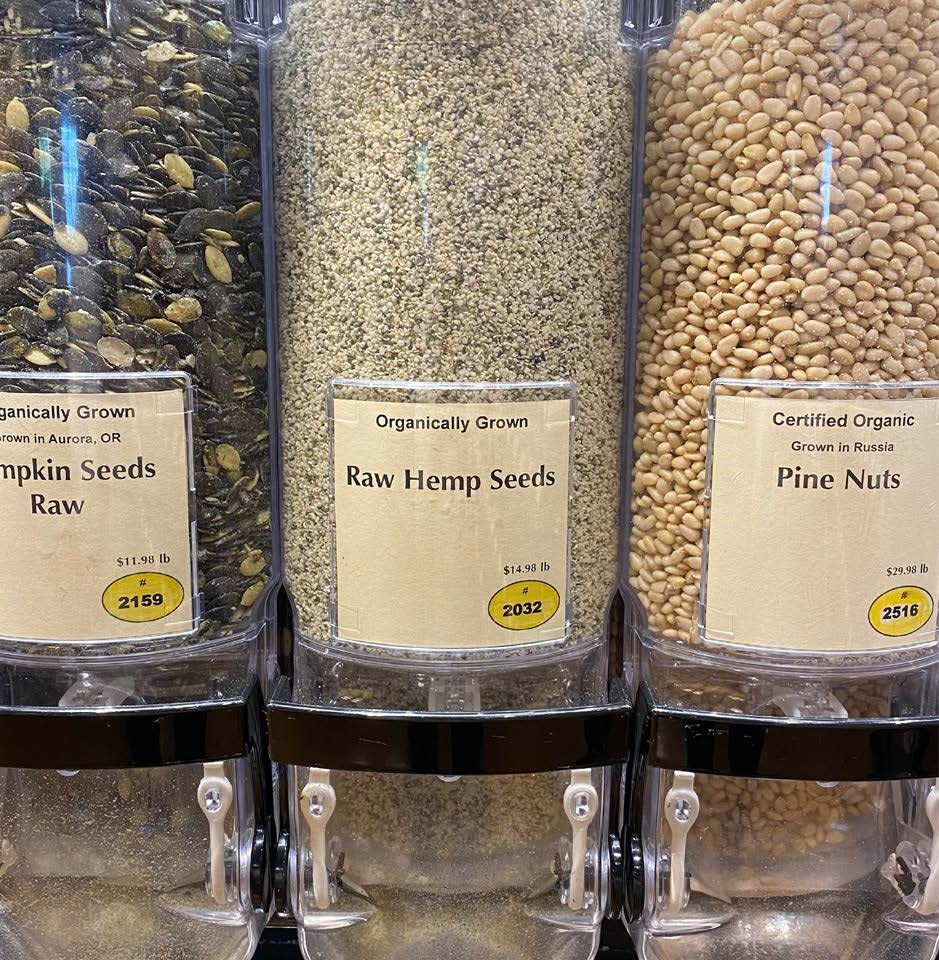 Any prepackaged organic product sold by a retailer in the same package that it was received in may maintain whatever labeling it arrived in. If the product displays the USDA organic seal or makes an organic claim on the front label panel of the product (including “made with organic ingredients…,”) then it must be certified under the USDA National Organic Program regulations and display on the information panel, under the name of the handler or distributor, the name of the certification agency that certified the product.
Any prepackaged organic product sold by a retailer in the same package that it was received in may maintain whatever labeling it arrived in. If the product displays the USDA organic seal or makes an organic claim on the front label panel of the product (including “made with organic ingredients…,”) then it must be certified under the USDA National Organic Program regulations and display on the information panel, under the name of the handler or distributor, the name of the certification agency that certified the product.
If you are handling certified organic product, but not processing, you may provide the same information as provided on the original container.  For example, if you are transferring bulk certified organic flour to a bulk bin, the retail display, labeling and display containers may use the USDA organic seal. The same would apply to certified organic apples that are transferred from a case box the apples arrived in, to the organic produce display case.
For example, if you are transferring bulk certified organic flour to a bulk bin, the retail display, labeling and display containers may use the USDA organic seal. The same would apply to certified organic apples that are transferred from a case box the apples arrived in, to the organic produce display case.
IMPORTANT! Keep in mind that packaging and/or repackaging certified organic product into a retail container that is closed, sealed and labeled by the retailer for sale to the consumer as an individual unit, is considered processing. In this situation if you are not certified, you must not represent, label or sell the product as “certified” organic or display the USDA organic seal. You may however label the product as “organic” or “organically grown.”
Other common retail activities (especially for restaurants, bakeries delicatessens, meat departments, prep areas in general and in-store kitchens) that fall under “processing” include cooking, baking, heating, dehydrating, mixing, cutting, extracting, canning, and jarring.
Remember the following when designing labels or signage for your store:
- If you process organic products, you must not use the USDA organic seal or refer to the product(s) as “certified organic” unless you are a certified retailer.
- If you are uncertain whether your activity is considered “processing,” simply use the term “organic” or the phrase “made with organic.” There is no size restriction, or any limitation, on how you display the “term” organic as long as it is accurate and truthful.
- Articulation of grower practices, farm location, or farmer-retailer relationships is welcome as long as the word “organic” is not used in the description of a non-certified product.
With respect to foods labeled by a retail establishment and sold on-site, the following tables clarify the product composition requirements and allowed label claim. The same rules apply to display labels used near or around the products.
Labeling and relabeling organic products can be divided into four general areas:
- 100% Organic - If all ingredients, including processing aids, are organic, the product can be labeled as “100% organic” or simply “Organic”.
- At least 95% Organic - At least 95% of the product, by weight or fluid volume, is comprised of organic ingredients. This type of product may use the term “organic.” Water and salt are excluded from the calculation. The 5% non-organic ingredients in this category are strictly controlled and must appear on the National Organic Program’s List of allowed substances and no ingredient (organic or non-organic) may be genetically engineered, grown using sewage sludge, or irradiated.
- 70% or More Organic Ingredients – At least 70% of the product, by weight or fluid volume, is comprised of organic ingredients. This type of product may use the phrase “made with organic (specified ingredients or food groups).” Again, water and salt are excluded from the calculation. The 30% non-organic ingredients in this category are strictly controlled. Non-agricultural ingredients, such as sodium bicarbonate and tocopherols, must appear on the National Organic Program’s List of allowed substances. No ingredient (organic or non-organic) may be genetically engineered, grown using sewage sludge, or irradiated.
- Less than 70% Organic Ingredients - The term “organic” may not be used anywhere on the packaging (front) display panel; the label may only list the organic ingredients in the ingredient list on the information (back) panel. Water and salt are excluded from the calculation. Other ingredients do not have any restrictions, such as genetically engineered or irradiated.
